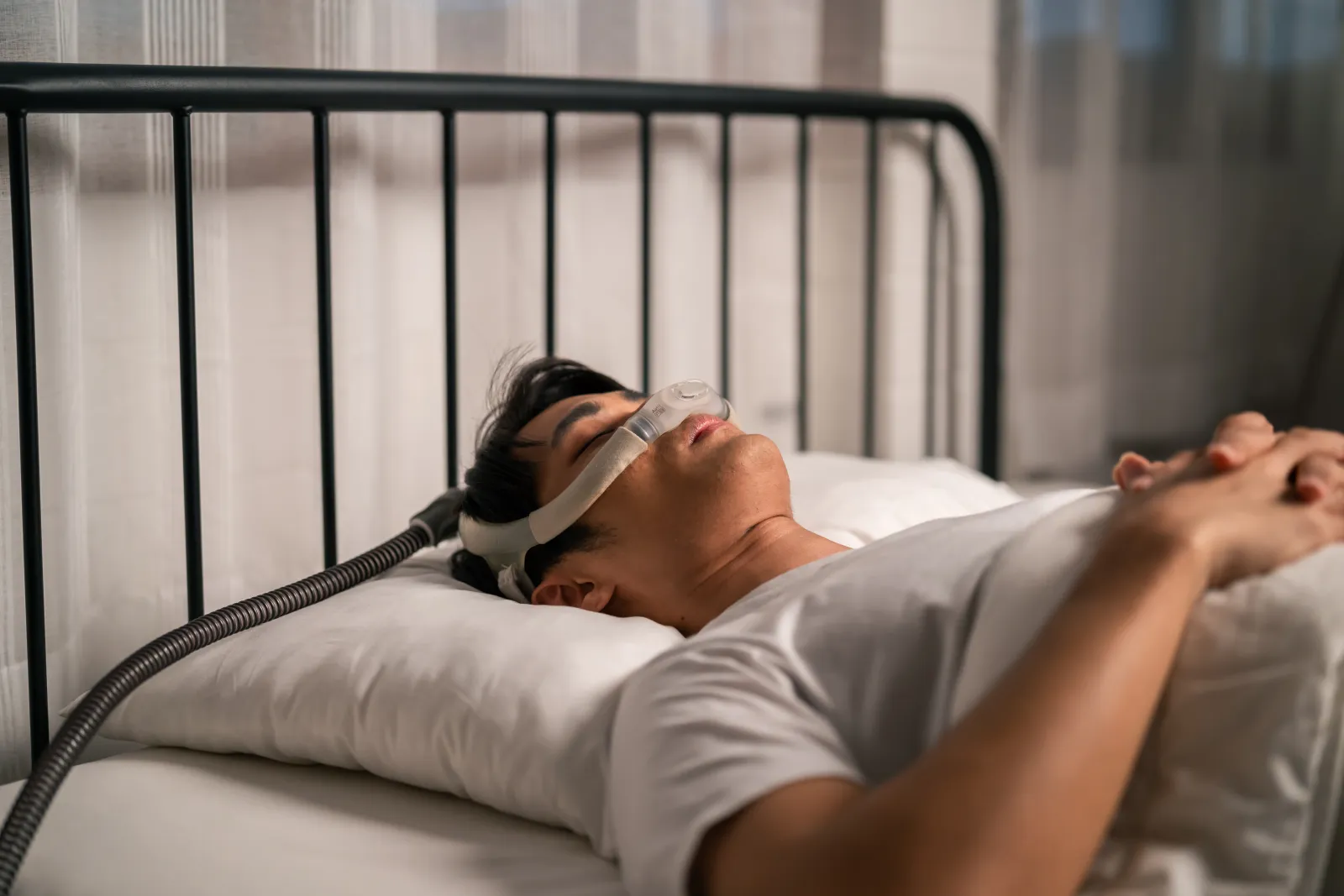
Many people snore and assume it’s harmless. But snoring can signal airway resistance.
It’s not just noise. It’s breath struggling to pass through narrowed passages.
Soft tissues vibrate, sometimes collapse during sleep.
That collapse can briefly stop breathing.
Snoring alone doesn’t always mean sleep apnea—but it’s a red flag worth checking.
Blocked nasal passages disrupt nighttime breathing
Nasal congestion from allergies or a deviated septum limits airflow.
You shift to mouth breathing, which worsens sleep quality.
Mouth breathing encourages jaw misalignment and throat dryness.
ENT issues often begin in the nose.
Blocked nasal passages disrupt nighttime breathing without being obviously dangerous.
Enlarged tonsils often narrow the upper airway
Tonsils aren’t always just a childhood problem.
In adults, they can remain oversized and obstruct airflow during sleep.
Enlarged tonsils create resistance in the throat’s natural shape.
They collapse more easily when the body relaxes.
Enlarged tonsils often narrow the upper airway—and contribute to apnea cycles.
Deviated septum limits nasal airflow on one or both sides
The nasal septum should divide airflow evenly.
When it’s crooked, airflow favors one side.
During sleep, lying on one side can worsen obstruction.
Chronic blockage causes fatigue and headaches.
A deviated septum limits nasal airflow on one or both sides—often silently.
Chronic sinus inflammation affects oxygen intake during sleep
Recurring sinus infections cause swelling and congestion.
Mucus builds up, narrowing the nasal cavity.
Breathing becomes inconsistent.
Sleep becomes fragmented.
Chronic sinus inflammation affects oxygen intake during sleep—without the person realizing it.
Sleep apnea is rarely isolated from other ENT conditions
People often treat apnea as a sleep problem alone.
But its causes involve the nose, throat, and even ears.
Obstruction isn’t always in one location.
It shifts depending on posture, allergies, inflammation, or infection.
Sleep apnea is rarely isolated from other ENT conditions.
Obstructive apnea starts when soft tissue collapses during sleep
During deep sleep, muscles relax.
In some, the soft palate or tongue collapses too far.
This blocks the throat’s airway.
Breathing pauses briefly but repeatedly.
Oxygen drops.
Obstructive apnea starts when soft tissue collapses during sleep—and it’s often structural.
Enlarged adenoids in children lead to restless nights
Children with sleep apnea aren’t always overweight.
Sometimes it’s adenoids—glands behind the nasal cavity—that block air.
These children snore loudly, toss during sleep, and struggle to wake up rested.
They may wet the bed or show learning delays.
Enlarged adenoids in children lead to restless nights—and misdiagnosis.
Jaw alignment plays a role in airway stability
A recessed jaw reduces oral space.
The tongue sits further back, closer to the throat.
This position can partially block breathing during sleep.
ENT specialists work with dentists on this.
Jaw alignment plays a role in airway stability—even in adults.
Chronic ear infections might share underlying causes
Eustachian tubes help regulate ear pressure.
Blocked nasal passages affect their function.
Chronic allergies or sinus issues increase the risk.
Ear infections seem unrelated but aren’t.
Chronic ear infections might share underlying causes with nasal obstruction or poor sleep.
Daytime fatigue might trace back to ENT anatomy
Some people wake up exhausted without explanation.
They’ve slept eight hours but still feel unrested.
They never consider that poor oxygen flow caused it.
If nasal or throat structures block airflow, quality sleep suffers.
Daytime fatigue might trace back to ENT anatomy—not lifestyle.
CPAP masks don’t work well when nasal breathing is impaired
CPAP therapy pushes air to keep the airway open.
But it depends on nasal breathing.
If the nose is chronically blocked, pressure escapes or causes discomfort.
Patients remove the mask at night unknowingly.
CPAP masks don’t work well when nasal breathing is impaired.
ENT evaluation is often the missing step in apnea diagnosis
Sleep tests confirm apnea, but not its cause.
Many patients go undiagnosed for years.
They try mouthguards or medications without success.
An ENT evaluation finds the source—nasal block, tonsils, sinus shape.
ENT evaluation is often the missing step in apnea diagnosis.
Silent reflux can irritate the throat and increase collapse risk
Acid travels up from the stomach without obvious symptoms.
It irritates the throat lining.
This swelling narrows the airway during rest.
Sleep becomes noisy and interrupted.
Silent reflux can irritate the throat and increase collapse risk in apnea patients.
Allergies inflame tissue and shrink the breathing space
Pollen, dust, and dander trigger immune responses.
Nasal tissues swell.
Postnasal drip thickens.
Breathing becomes strained.
Over time, this creates habitual obstruction.
Allergies inflame tissue and shrink the breathing space without causing illness directly.
Apnea episodes affect blood pressure and heart rhythm
Each breathing pause forces the body into stress mode.
The heart races, then slows.
Blood pressure spikes during sleep.
Over months, this strains the cardiovascular system.
Apnea episodes affect blood pressure and heart rhythm—even in young adults.
ENT surgery is sometimes the only effective solution
For some patients, lifestyle changes and devices aren’t enough.
Blocked airways need physical correction.
Turbinate reduction, tonsillectomy, or septoplasty can help.
Surgery isn’t always drastic.
ENT surgery is sometimes the only effective solution when anatomy is the core issue.
Children with ENT-related apnea may be misdiagnosed with behavior issues
Tired children don’t always look sleepy.
They act out.
They lose focus.
They get labeled as inattentive or hyperactive.
Poor sleep often underlies these symptoms.
Children with ENT-related apnea may be misdiagnosed with behavior issues.
Snoring during childhood is not developmentally normal
Snoring in kids often goes unaddressed.
Parents assume it’s harmless or temporary.
But it can reflect serious obstruction.
Brain development relies on quality sleep.
Snoring during childhood is not developmentally normal and may require ENT care.
Treatment must be tailored to airway structure and cause
No two cases are the same.
One person’s apnea comes from sinuses.
Another’s from tonsils or jaw shape.
Generic solutions won’t work.
Treatment must be tailored to airway structure and cause—starting with proper diagnosis.
Source: Otolaryngologist in Dubai / Otolaryngologist in Abu Dhabi
